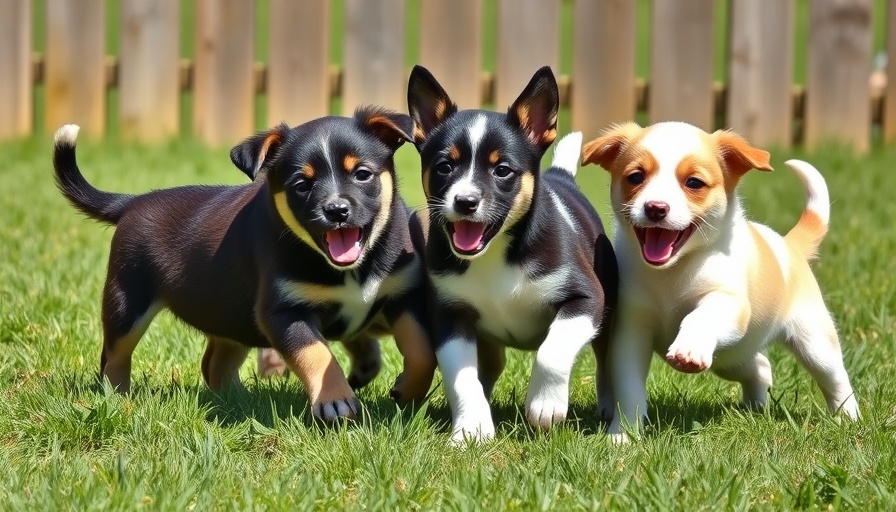
Understanding the Importance of Puppy Vaccination
When you bring a new puppy into your life, the excitement of their little barks and mischievous antics is matched only by the responsibility that comes with caring for them. One major concern every new dog owner faces lies in understanding their puppy's vaccination schedule. It's essential to grasp how core vaccinations protect against diseases like parvovirus and distemper. These conditions spread quickly, especially in environments with mixed dog populations like parks and social settings. Knowing when your puppy is shielded is crucial for planning playdates.
When Can Puppies Safely Interact with Other Dogs?
Getting your puppy socialized is vital, but doing so safely is paramount. For instance, after their first vaccinations, puppies are still at risk, and interaction should ideally be limited to known and healthy dogs that have completed their vaccinations. A puppy's immune system is still developing and does not provide full protection against illness until they've received all initial shots.
Socialization Timeline for Puppies
To help you navigate the complexities of when and how to introduce your puppy to other dogs, a simple timeline can be helpful. Vaccination typically begins at around 6-8 weeks, with follow-up vaccines administered at intervals of 10-12 and 14-16 weeks. Only after your puppy is fully vaccinated at about 16 weeks can they begin to explore public spaces more freely.
The Role of Core Vaccinations
The American Animal Hospital Association emphasizes the necessity of core vaccinations, such as rabies and parvovirus, in safeguarding your puppy against life-threatening illnesses. For every responsible dog owner, keeping track of these essential vaccinations is the bedrock of responsible pet ownership and socialization.
Tips for Echoing Safety During Puppy Playdates
Before organizing playdates, consider these tips to ensure a safe encounter:
- Meet in Neutral Territories: Avoid bringing puppies into established dog territories to reduce territorial aggression.
- Assess the Playmate: Make sure the other dog is healthy and fully vaccinated, and observe if they have a compatible play style.
- Short Interactions: Start with brief introductions to gauge reactions and prevent overwhelm.
- Provide Supervision: Always supervise interactions to mitigate risks and facilitate positive experiences.
Common Misconceptions About Puppy Socialization
Many new dog owners fall into the trap of thinking puppies are invincible when it comes to playing with older or larger dogs. However, this misconception can lead to dangerous situations. The physicality of older dogs could inadvertently harm a young puppy, or they may transmit diseases if not properly vaccinated.
Conclusion: Engaging with Your Puppy Safely
Puppy socialization is essential, but it must be well-timed and executed carefully. Ensuring your puppy is fully vaccinated not only protects their health but also enhances their enjoyment of life and interactions later on. By following proper vaccination schedules and promoting safe introductions, you set your puppy up for a happy and healthy social life.
 Add Row
Add Row  Add
Add 




Write A Comment